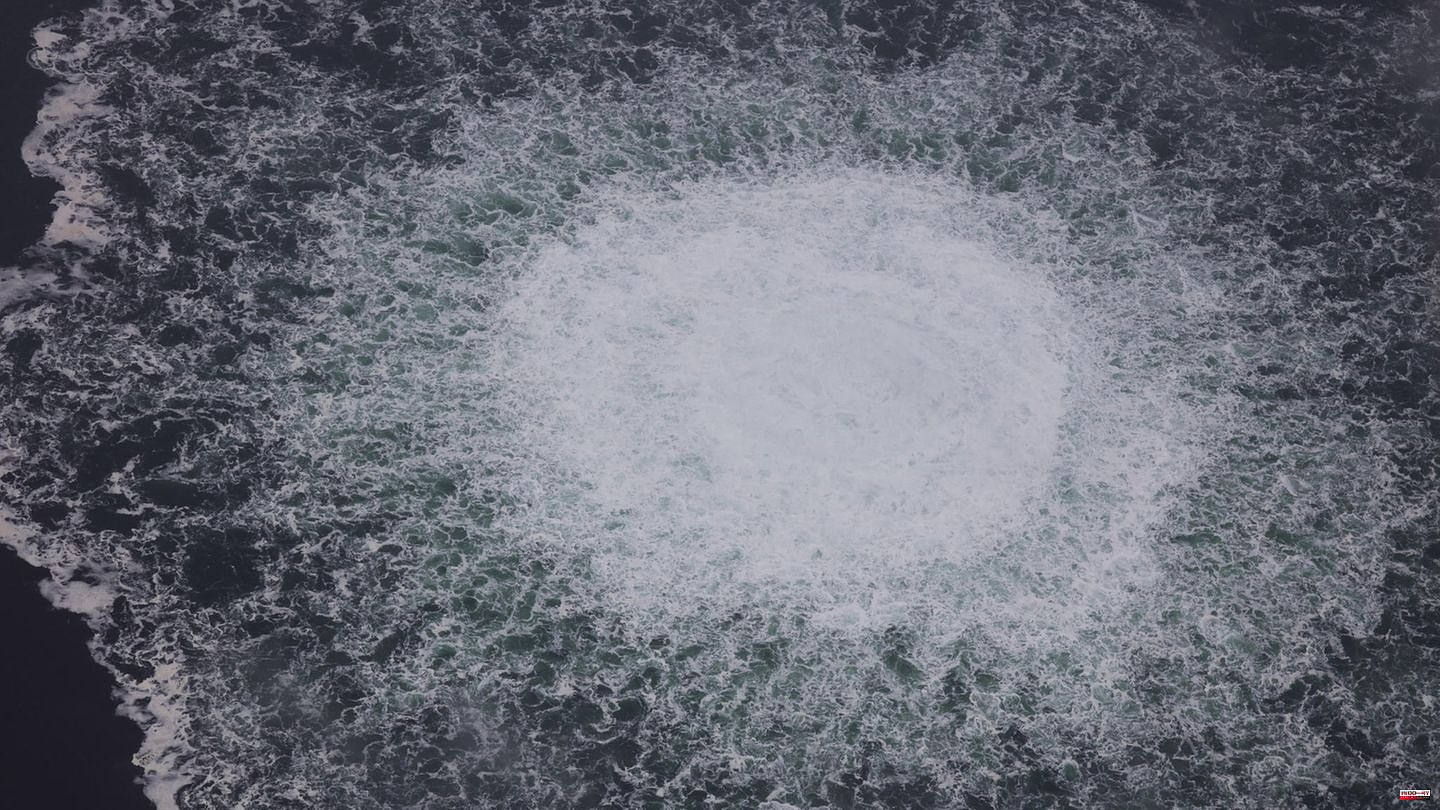At the end of September, explosions tore several holes in the Nord Stream gas pipelines in the Baltic Sea, which lead from Russia to Germany. Large amounts of gas had escaped continuously for days from several leaks. Up to 400,000 tons of methane are estimated to have entered the atmosphere.
There is a suspicion of sabotage.
But the big question is still: Who is behind the explosions? Western governments see Moscow as the mastermind. Russia itself blamed a British naval unit for the "terrorist attack" - a claim Britain denies.
New satellite photos could shed light on the Nord Stream mystery.
According to the US technology magazine "Wired", an analysis is said to show that two large ships with trackers switched off appeared in the said area in the days immediately before the leaks appeared.
According to private satellite data monitoring company SpaceKnow, the two "dark ships," each about 95 to 130 meters long, were sailing just a few kilometers from the Nord Stream 2 leak sites. They are called dark because they are practically invisible.
"We have spotted some dark ships, ships of considerable size, passing through this area of interest," Jerry Javornicky, CEO and co-founder of SpaceKnow, told Wired. "They had their beacons turned off, meaning there was no information about their movement, and they were trying to hide their location information and general information from the world."
The CEO said the company spent 90 days searching archived satellite imagery from the area. Images from multiple satellite systems - including paid and free services - were analyzed.
In the weeks leading up to the blasts, SpaceKnow spotted 25 ships navigating the region, ranging from "cargo vessels to larger multipurpose vessels," according to Javornicky. A total of 23 of these ships had their Automatic Identification System (AIS) transponders switched on. Two did not have AIS data turned on - and these vessels passed through the area in the days immediately prior to the leaks' discovery.
International law requires large ships to install and use AIS. This ship tracking system is designed to help with navigation and avoid potential collisions. When switched on, AIS sends the ship's name, location, direction of travel and speed, among other things.
Ships with AIS turned off are rare. Illegal fishing or human trafficking is often suspected. Switching off the AIS is unusual, especially in the busy Baltic Sea – and also dangerous.
SpaceKnow detected the ships that had AIS turned off using synthetic-aperture radar (SAR) images from satellites. Most satellites that observe the Earth take pictures of what is below them. Others use SAR to bounce radio waves off the ground and use them to create images.
SAR images obtained by Wired show the vessels in question as glowing objects not far from the Nord Stream 2 blast site.
"We assume it was one of those two dark ships that we spotted," Javornicky said. However, his company is not tasked with determining what may have happened or who is responsible, but instead made the data available to the authorities.
SpaceKnow reported its findings to NATO officials investigating the Nord Stream incidents, Wired further reports. Javornicky said NATO officials have asked the company to provide more information.
A NATO spokeswoman told Wired she would not comment on "the details of our support or the sources used." However, a NATO official who was unable to speak publicly confirmed to the magazine that NATO received the data from SpaceKnow and said the satellite imagery could prove useful in their investigation.
Andrey Kurekin of the Plymouth Marine Laboratory analyzes satellite imagery to detect objects at sea. He told Wired that AIS could also fail or be tampered with. "If you can see a ship on the SAR image but it's not reported by the AIS system, that doesn't necessarily mean there's something wrong with that ship."
Martin Dommerby Kristiansen from the Danish company Gatehouse Maritime, which specializes in ship surveillance that is based, among other things, on the so-called AIS position data, sees things a little differently. He finds the new information from SpaceKnow very interesting. Because in addition to civilian ships on dubious journeys, military ships would often be on the move with the AIS transponder switched off.
The size of the "dark ships" indicates that they must be either large military ships or civilian ships similar in size to cargo ships, according to Gatehouse Maritime's director. "It's unusual for such large 'dark' ships. Behind it is probably the wish that you don't want to be seen. It's rare for AIS to fail - there's usually a conscious act behind it," he told the Danish newspaper Berlingske.
The investigations into the leaks in the Nord Stream pipelines continue. In addition to the Nord Stream company, Denmark, Sweden and Germany are also investigating the incident.
Sources: "Wired", NPR, Säkerhetspolisen, Polzei Denmark, "Offshore Technology", "Berlingske"












